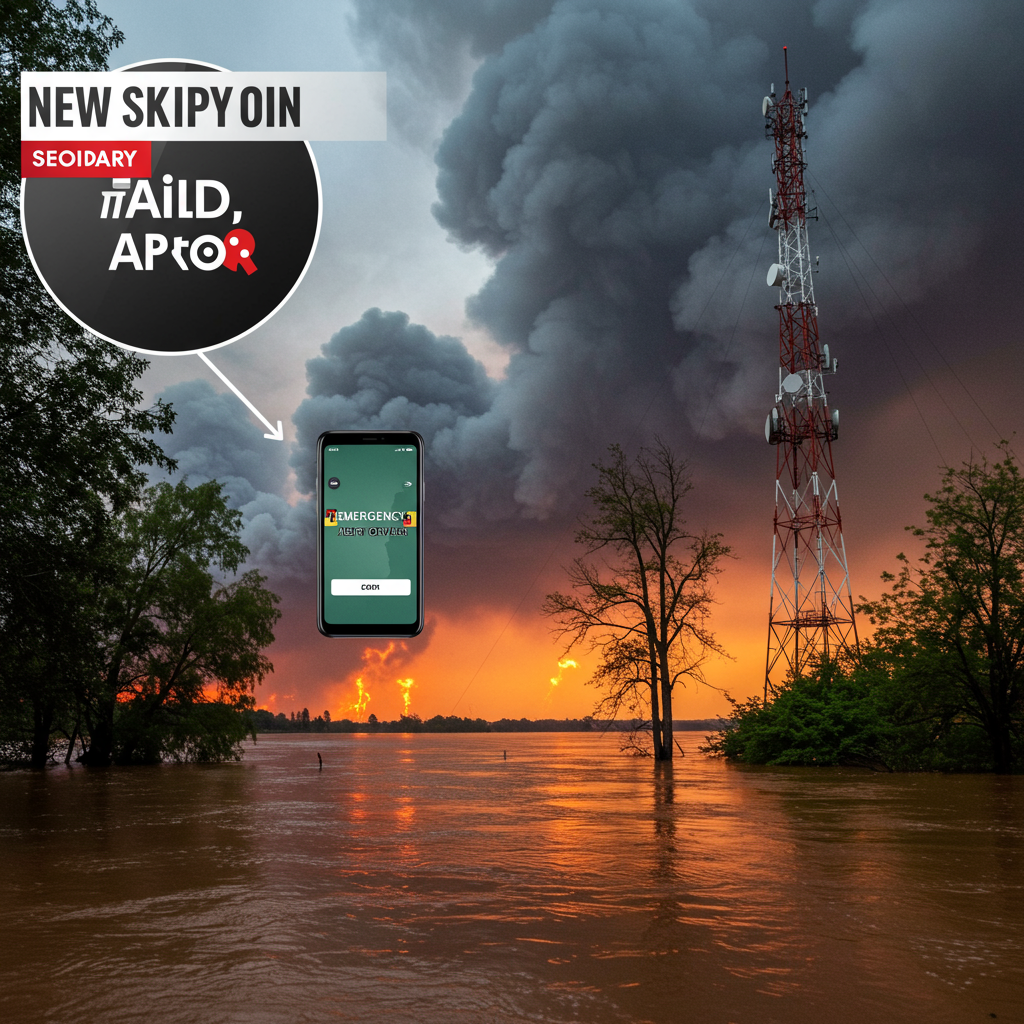When disaster strikes, timely and clear communication can mean the difference between safety and tragedy. Yet, across the United States, emergency alert systems frequently fall short, leaving lives at risk. Recent high-profile events, from devastating floods in Texas to wildfires in California and Hawaii, highlight critical flaws extending beyond simple technical glitches. Experts point to a complex mix of issues, including human error, insufficient training, poor coordination between agencies, and messages that are simply too vague to be actionable. Understanding why these systems fail is the essential first step toward building more resilient communities in the face of increasing natural threats.
The Peril of Unclear Instructions: The Texas Flood Tragedy
The deadly flooding along Texas’s Guadalupe River in July 2025 serves as a stark example of communication breakdown. As floodwaters rose more than 30 feet in just five hours, the National Weather Service (NWS) issued urgent alerts. These warnings, indicating a “considerable” flood threat, reached phones via push notifications and activated weather radios beginning shortly after 1 a.m. on July 4th. More NWS alerts followed, accurately predicting the danger.
However, federal weather warnings are only one piece of the puzzle. Evacuation orders and specific safety instructions typically originate from local governments. According to investigations, the critical delay occurred at this local level. The Kerrville Police Department posted its initial evacuation order to social media around 5 a.m., hours after the NWS alerts started. Kerr County and the city of Kerrville issued their own orders even later. By the time these local alerts arrived, stating things like “Move to higher ground now” or “Be safe and move to higher ground,” the water had reached catastrophic levels.
The sheer speed of the floodwaters presented immense challenges for any response, no matter how swift. Yet, it’s clear the alerting system failed many people. Some residents had unreliable cell service, others weren’t checking social media platforms, and many in the flood-prone area suffered from “alert fatigue.” Vacationers unfamiliar with the terrain had no way of knowing precisely what “higher ground” meant for their specific location. A proposed system of river sirens had been considered years prior but reportedly wasn’t installed due to cost, leaving the area with minimal on-the-ground warning infrastructure when the crisis hit. The resulting death toll tragically exceeded 100 people.
Beyond Tech: Human Factors in Communication Failure
While technological hiccups can occur – like the software issue that mistakenly sent evacuation orders to millions during Los Angeles fires, leading to recipients receiving numerous false alarms – emergency alert failures are often rooted in human processes and training gaps. Messages must be written, approved, and sent, often under immense pressure. This sequence presents multiple points where errors can happen.
In the Texas flood instance, while the NWS forecasts were accurate and staffing was prepared for the storm itself, key liaison positions were vacant. Specifically, the roles of warning-coordination meteorologist and a science-and-operations-officer were open. These positions are crucial for communicating complex forecast information to local officials and helping them determine when to issue evacuation orders. Experts describe these roles as “connectors”; their absence creates a significant gap in the crucial handoff between federal forecasting and local action. Compounding this, Kerr County reportedly did not utilize the federal Wireless Emergency Alerts (WEA) system, capable of reaching cellphones widely, until days after the flood’s peak.
Crafting a truly effective alert message is challenging. According to experts, a good alert needs three core pieces of information: the affected location, clear, plain-language instructions on what to do, and a timeframe for action. Many alerts lack one or more of these vital elements. Furthermore, officials authorized to use systems like WEA aren’t always required to undergo training or credentialing. Facing a blank screen during a dire event, the pressure can be paralyzing, leading to vague or incomplete messages.
The “Higher Ground” Problem: Vague Warnings Aren’t Enough
The instruction “move to higher ground” sounds intuitive, but in a real emergency, it can be functionally meaningless. Without specific, localized information, residents—especially visitors—don’t know if their property is high enough, where the nearest safe elevation is, or how to get there safely.
A tsunami warning incident in San Mateo County, California, in December 2024 highlighted the perils of vague instructions and conflicting messages. Following a major offshore earthquake and an initial NWS tsunami warning delivered to phones, confusion erupted. San Mateo County mistakenly sent a social media message announcing the warning’s cancellation – a cancellation that only applied to Hawaii. A correction followed, but trust had been eroded. Even the correct instruction to “move to high ground” was problematic, offering no specific guidance. Adding to the chaos, local responses varied: some Bay Area governments sounded tsunami sirens, others didn’t; some issued mandatory evacuations, others did not. This lack of a unified voice sowed significant confusion among the public.
Building Better Systems: Coordination and Clarity
Lessons learned from these incidents are driving improvements in some areas. San Mateo County, for instance, has significantly revamped its approach since the tsunami scare. They focused on coordinating the more than 30 local agencies with alert authority to ensure a single, unified message goes out during a future crisis. This reduces conflicting information and helps rebuild public trust. They’ve also developed pre-written alert templates using clear, jargon-free language for various scenarios. Crucially, they’ve built a public website allowing residents to check if their specific address is considered “high ground” and are educating the community on using this resource.
Reaching everyone requires moving beyond relying solely on cell phone alerts or social media. As experts emphasize, the more ways a person receives a critical message, the more likely they are to get it and act. Putting all effort into one technology significantly increases the chance of failure. Communities like Sacramento County are implementing multi-modal alerting systems, including landline alerts, using sheriff’s deputies with loudspeakers, and even exploring drone announcements in addition to digital methods.
Ultimately, no system guarantees reaching every single person. Effective emergency management requires a fundamental shift in public mindset: individuals must understand their own risks and genuinely believe they are in danger. Owning a NOAA weather radio, which doesn’t rely on the power grid and can issue loud, urgent alerts, is a simple yet critical step. While complacency is natural, simply paying attention to forecasts and thinking through potential risks can greatly enhance personal safety. As climate change increases the frequency and intensity of weather disasters, and as federal resources potentially dwindle, the responsibility for preparedness will increasingly rest with local communities and individuals.
Frequently Asked Questions
Why do emergency alert systems sometimes fail to protect people?
Emergency alert failures stem from multiple issues, not just technology problems. They include delays in local officials issuing warnings after federal agencies provide forecasts, human errors in writing and sending messages, insufficient training for alert operators, and poor coordination between different local and federal agencies. Vague instructions, like telling people to “move to higher ground” without specifying where, also contribute to confusion and ineffective responses.
What makes an effective emergency alert message?
Effective emergency alerts must be clear, concise, and actionable. Experts recommend including at least three critical pieces of information: the specific location affected, plain-language instructions on exactly what actions people should take (e.g., “evacuate to the community center,” not just “move to safety”), and a specific time or timeframe by which people should act. Using simple, jargon-free language is also crucial for ensuring widespread understanding.
How can individuals better prepare for emergencies when alert systems might fail?
Individuals can significantly enhance their preparedness by not solely relying on official alerts. Practical steps include owning a NOAA weather radio for reliable warnings that don’t depend on cell service or the power grid. It’s also vital to proactively understand the specific risks in your location (e.g., is your home in a flood zone?) and pre-plan evacuation routes and safe locations. Paying attention to everyday weather forecasts and discussing emergency plans with your household are simple actions that build resilience.
Conclusion
The recurring failures of emergency alert systems are a wake-up call. From delayed and confusing evacuation orders during floods to misdirected alerts in wildfires, the current approach has critical vulnerabilities. While technology plays a role, the path forward lies in improving human systems: enhancing training for local officials, fostering better coordination across agencies, developing clear and actionable message templates, and implementing multi-modal warning strategies to reach more people through different channels. Ultimately, true resilience requires a combination of improved systemic alerting and increased individual awareness and preparedness. As threats escalate, the onus is increasingly on communities and individuals to be ready.
Word Count Check: 1190 words



